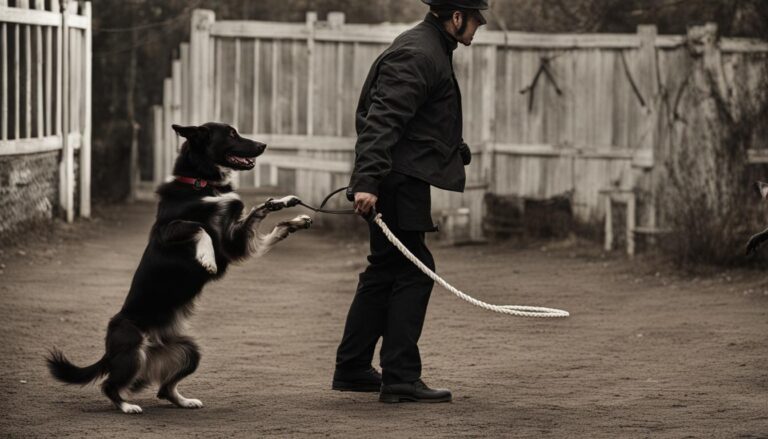Can You Train Cats Like Dogs?
Cats are known for their independent nature, but that doesn’t mean they can’t be trained like dogs. Cat owners around the world have successfully trained their feline companions, demonstrating that it is indeed possible to nurture desirable behaviors in cats. While there are some differences between training cats and dogs, there are also notable similarities.
When it comes to cat obedience training and behavior modification, positive reinforcement techniques work wonders. Cats, just like dogs, respond well to short training sessions, repetition, and the use of high-value treats. While cats may require some adjustments in training techniques, they can be trained to follow commands and even perform tricks.
Training Tips for Cats
When it comes to training cats, it’s important to keep the sessions short and engaging. Cats have shorter attention spans compared to dogs, so limiting training sessions to about 5 minutes is ideal, especially when working with kittens.
Consistency is key when training cats. Frequent training sessions will yield better results, as cats learn through repetition. By incorporating short, regular training sessions into your cat’s routine, you’ll help reinforce what you’re teaching them.
Using high-value treats is a powerful motivator for cats during training. Choose treats that your cat absolutely loves, such as soft, meaty bites. These tasty rewards will capture their attention and encourage them to learn and perform desired behaviors.
In addition to treats, providing gentle petting and praise can go a long way in reinforcing positive behaviors during training. Cats respond well to positive reinforcement, and a gentle touch or a kind word can show them that they’re doing something right.
Remember, cat training is a process that requires patience and understanding. Each cat is unique, so be sure to tailor your training approach to suit their individual needs and preferences. With consistent and positive training techniques, you can help shape your cat’s behaviors and foster a stronger bond between you both.
Benefits of Training Your Cat
Training your cat comes with a multitude of benefits that go beyond just teaching them tricks. The process of training can strengthen the bond between you and your furry friend, leading to a deeper connection and mutual understanding.
Through training, you establish trust and create positive interactions, which are essential for building a strong relationship with your cat. This can result in a happier and more harmonious household.
Another advantage of cat training is the mental enrichment it provides. Cats are intelligent creatures with a natural curiosity, and training activities can help stimulate their minds and prevent boredom. By engaging in training sessions, you can redirect their energy in a constructive way and prevent them from engaging in unwanted behaviors, such as scratching furniture or excessive meowing.

Training your cat can also make cooperative care, such as grooming and administering medications, much easier. Through training, you can teach your cat to tolerate and even enjoy these necessary tasks, reducing stress for both of you.
Overall, cat training offers a range of benefits, from strengthening your bond to providing mental stimulation for your feline companion. By investing time and effort into training, you can create a happier and more fulfilling relationship with your cat.
Training Cats vs Dogs: Similarities and Differences
Training cats and dogs may have some similarities, but there are also notable differences to consider. Both species respond well to positive reinforcement training, which involves rewarding desired behaviors with treats or praise. This approach is effective for cats and dogs alike, encouraging them to repeat the behaviors that are reinforced.
Cats, like dogs, can be trained to come when called, although the training techniques may vary. While dogs are often motivated by a desire to please their owners, cats are inherently more independent. This means that their motivation to learn and follow commands may differ from that of dogs. Understanding this difference is crucial in tailoring the training approach to each species.
It’s important to note that cats may require more patience and flexibility compared to dogs during training. They have their own unique personalities and preferences, which should be taken into consideration. By observing your cat’s natural behaviors and motivations, you can adjust your training techniques to ensure their success.

Training your Cat: Key Words and Actions
Training cats can be a rewarding experience for both you and your feline friend. One effective technique is using key words or phrases to associate specific behaviors and rewarding them for their cooperation. By utilizing positive reinforcement training, you can create a harmonious bond with your cat while teaching them basic commands.
Here are some essential key words and actions you can incorporate into your cat’s training routine:
- Gentle: Use this word to discourage biting and teach your cat to interact with you and others in a calm and gentle manner.
- Find it: Stimulate your cat’s mental engagement through play by using this phrase to encourage them to search for treats or toys.
- Target: Train your cat to direct their attention to a specific object by using this command. It can be useful for teaching them to touch or interact with certain items.
- Sit: Teach your cat to sit on command by associating this word with the action of sitting. This command can help with managing your cat’s behavior during various situations.
- On your mat: Encourage your cat to stay in a designated area by using this phrase. It can be helpful for creating boundaries and providing them with a safe space.
- Come: Train your cat to come when called using this command. It promotes responsiveness and can be useful for ensuring their safety in outdoor environments.
- In the box: Teach your cat to enter a carrier or crate voluntarily by associating this phrase with the action. This can make vet visits or travel less stressful for both of you.
Remember, positive reinforcement is key. Always reward your cat with treats, praise, or gentle petting when they exhibit the desired behaviors. Understanding your cat’s natural behaviors and preferences will further enhance your training efforts.




